Homemade Lactose Free 2% High Protein Cottage Cheese
If you’re looking for a moderate fat, lactose-free, clean high protein cottage cheese, you probably won’t find it at the local grocery store since many lactose free is full-fat cottage cheese. Making this 2% lactose free cottage cheese at home is very simple with just 2 ingredients, and 24 grams of protein and just 1 gram of carbs per serving.
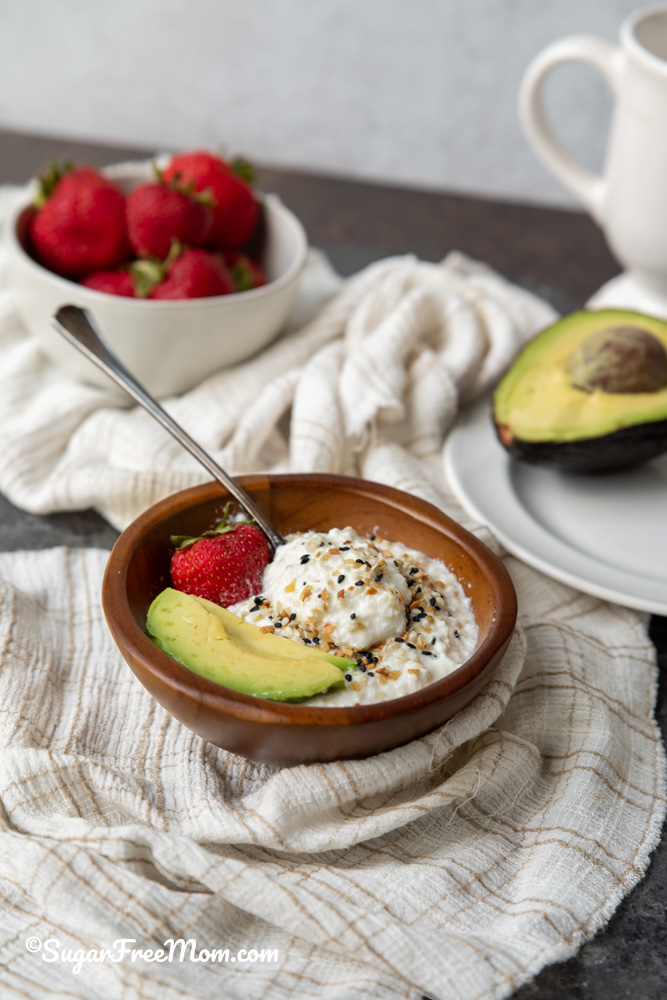
Homemade Lactose Free 2% Cottage Cheese
If you’re anything like me and on a keto diet or following a low-carb lifestyle, you probably have a soft spot for traditional cottage cheese—it’s so versatile and a powerhouse of protein.
But if you have lactose intolerance like me, finding a lactose-free option can sometimes feel like searching for a unicorn in the dairy products aisle.
The specific brands I’ve used are Green Valley, Good Culture brand, as well as the Lactaid brand but I haven’t found any that is also 2% and not full fat.
So I knew I wanted to make my own at home to fit into my Midlife Macros which is moderate fat, higher protein ketogenic diet, not high fat as classic keto is.
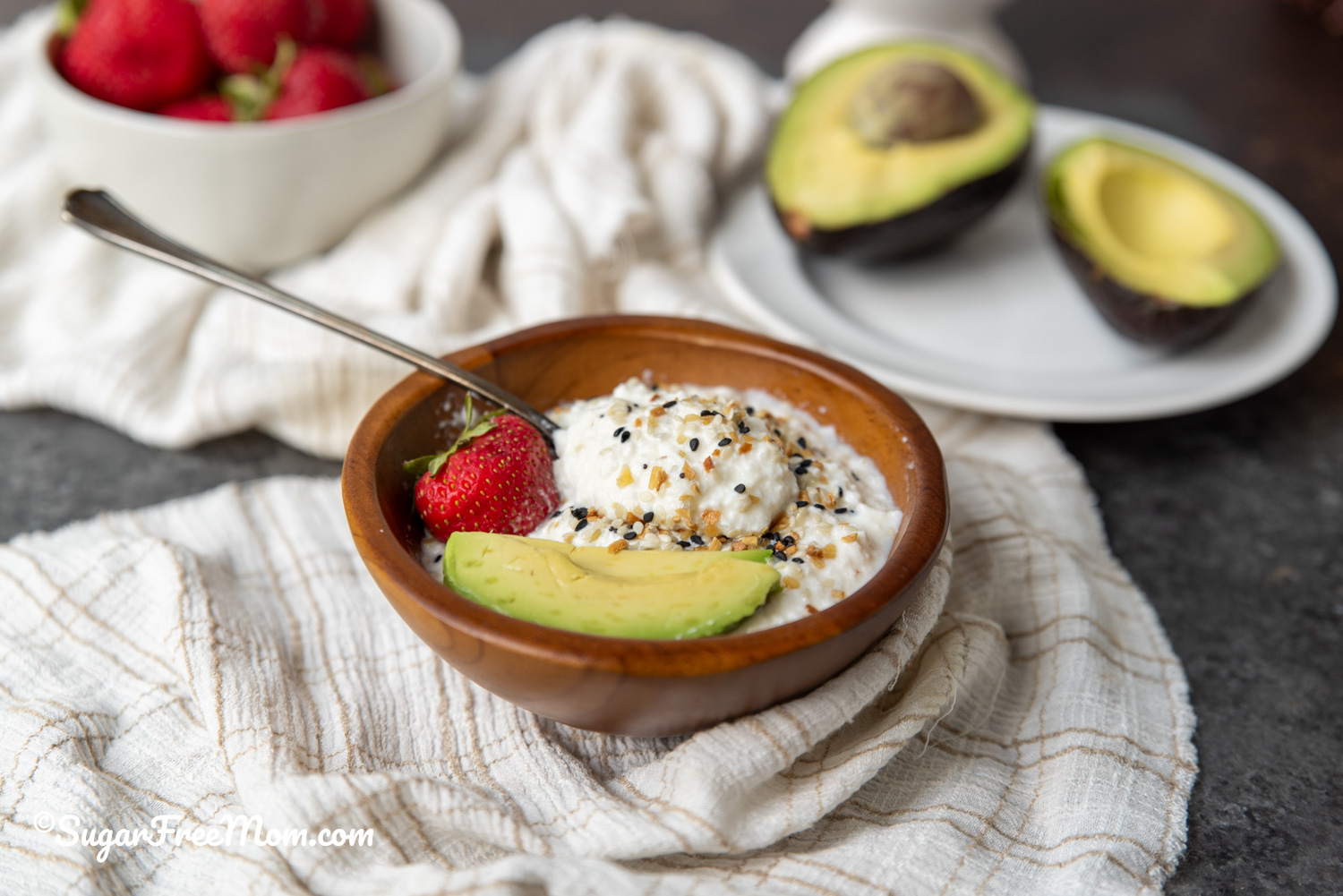
Why You Will Love this Great Recipe
Perfectly tailored for lactose sensitivity. This recipe swaps out the usual dairy base for lactose-free milk, so you get to enjoy all the creamy goodness of cottage cheese without worrying about digestive discomfort.
High protein boost with 2% fat. Unlike many low-fat or fat free cottage cheese, this version strikes a beautiful balance with 2% fat.
The result? A creamy, slightly rich creamy texture that also delivers a solid dose of muscle-friendly protein—ideal for those looking to power up their meals.
Homemade freshness and customization. Making cottage cheese at home means you control every ingredient and can tweak the taste and texture to your liking.
Plus, there’s nothing quite like the smell of fresh curds coming together in your own kitchen—and eating your curds and whey, well that’s the best part!
Why I Make Homemade Cottage Cheese
I used ½ gallon of 2% lactose-free milk and made about 1.5 cups of clean, low-fat, lactose-free cottage cheese — something I haven’t been able to find in stores anywhere.
Sure, it’s not cheaper, but it is:
✔️ Gentle on digestion
✔️ Lower in fat and carbs than most brands
✔️ Totally free from additives
✔️ Customizable and fresh
Bonus? I saved the whey and added it to my smoothie for extra protein and nutrients. Nothing wasted — and everything supports my Midlife Macro goals. My Midlife Macro Method™ is kicking off tonight! Register now to join me for coaching through the month of August.
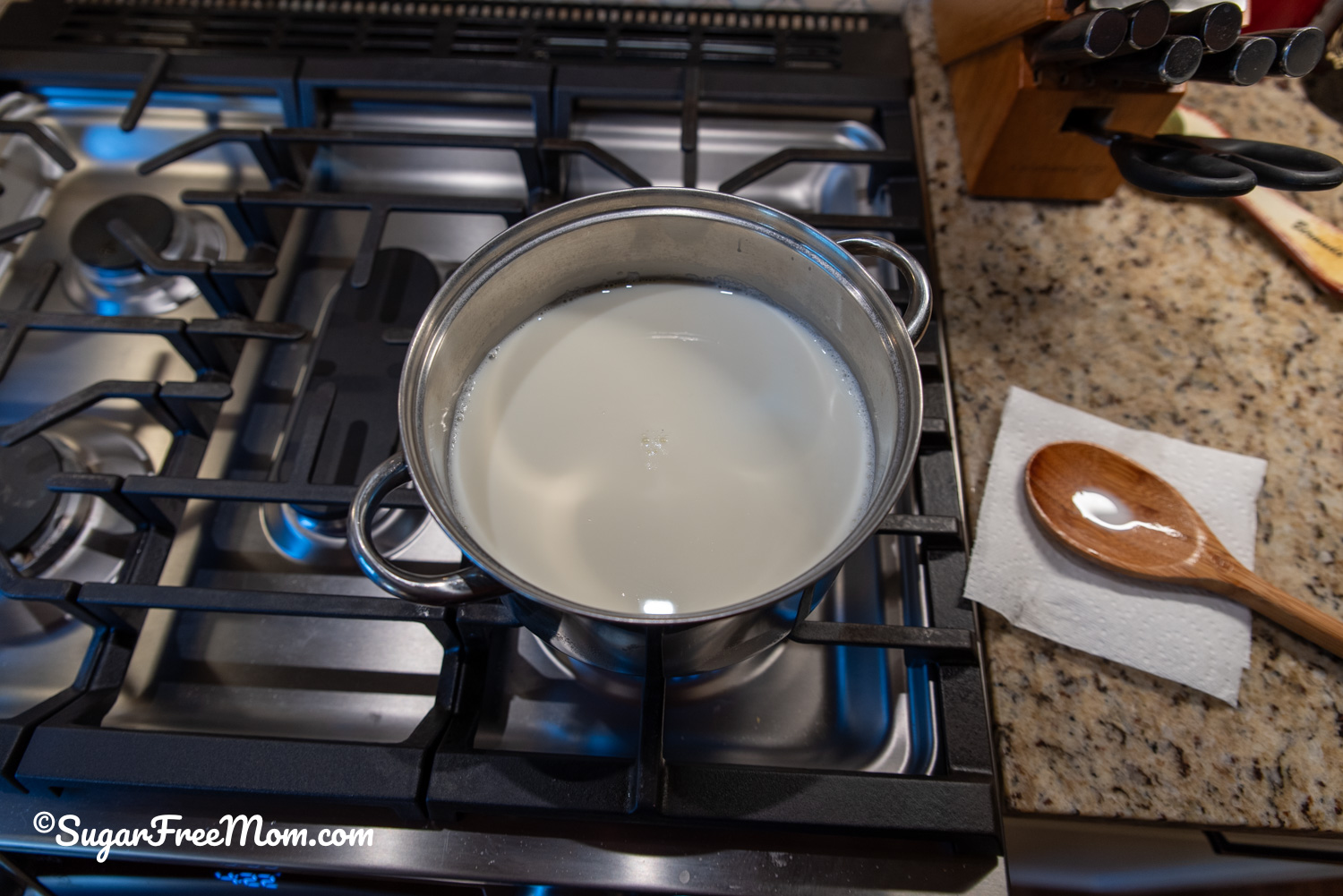
Homemade Cottage Cheese Has (Almost) No Carbs:
- I used vinegar to curdle the milk. That acid breaks the milk apart, causing the lactose (milk sugar) to remain in the whey, not in the curds.
- The curds (what becomes cottage cheese) are made up of casein protein and fat — not sugar.
- Since I drained all the whey (which holds most of the lactose), you’re left with a very low-carb or nearly zero-carb product.
- Our version has 24 g protein and 1 g of carbs. Full Printable recipe card with all nutritional information is at the bottom of this page.
Why Store-Bought Cottage Cheese Has More Carbs:
Not all the whey is removed
- Store-bought full fat cottage cheese is often packaged with extra liquid (whey) for moisture and texture.
- That whey contains residual sugars, even if it’s lactose-free, the sugars are still present — just in a digested form (glucose + galactose).
- So that adds carbs back to the final product.
Added ingredients
- Some brands include stabilizers or gums (like guar gum, carrageenan), or even starch or cream, which can increase carbs slightly.
- Even “clean” brands like Good Culture have 2–4g carbs per ½ cup, due to milk sugars still present in the curd mix.
Standard labeling assumes a certain carb content
- Even lactose-free milk is often labeled with 6g carbs per cup, because the sugar is still there — just in a digested form.
- That translates into the final label — even if your body responds differently.
My homemade version drains off the sugars in the whey. Store-bought versions keep more liquid + use processing steps that retain or label carbs differently.

Homemade Version is Lower in Fat:
- Store-bought lactose-free cottage cheese is only available in 4% (whole milk) varieties.
- Some of the fat remains in the curds.
- But with lower-fat milk, there’s simply less fat to begin with.
- Many store-bought brands add cream back into the curds for mouthfeel and flavor.
- My homemade version has about half the fat per serving compared to the market versions — without sacrificing protein or freshness.
- Perfect for your Midlife Macros approach: high protein, moderate fat, minimal carbs.
- Ideal for women who want to control fat intake while still feeling full and nourished.
BUT — Here’s When It IS Worth It to Make it at Home:
- You can’t find lactose-free cottage cheese easily.
- You want cleaner ingredients (no gums, additives, or preservatives).
- You enjoy the process and want to repurpose the whey (smoothies, ferments, etc.).
- You want to customize fat content or salt level.
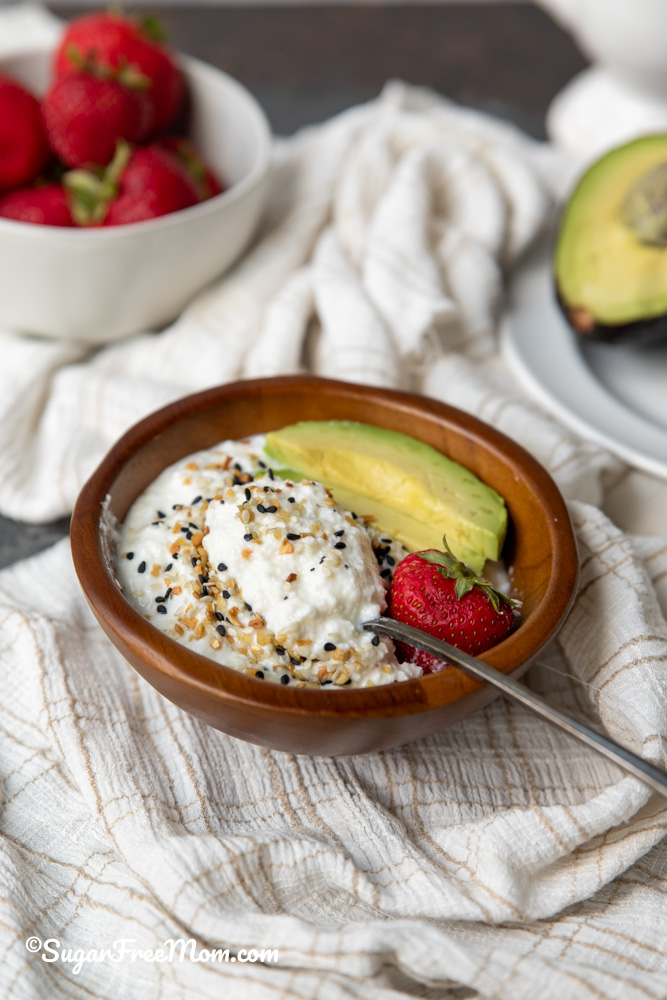
Simple Ingredients and Substitutions
Lactose-Free Milk. Using lactose-free milk is the heart of this recipe, providing all the richness of traditional milk but without the lactose that can cause discomfort. If you’re in a pinch, some almond or oat milk alternatives might work, but curdling might be less predictable.
2% Milk Fat Content. The 2% milk strikes a nice balance between creaminess and healthfulness, keeping the cottage cheese from being too watery or too heavy. If you prefer a richer option, whole milk can be used, but expect a thicker, creamier result.
Vinegar or Lemon Juice. Vinegar is typically used to curdle the milk in traditional cheese-making, but lemon juice is a lovely, natural substitute that’s easy to find and vegan-friendly.
The choice affects how quickly the curds form but both lead to delicious results. For a different flavor profile, you could use apple cider vinegar.
Salt. A pinch of salt brings out the flavors beautifully without overwhelming the mild curds. Feel free to adjust or leave it out, based on your preference or dietary needs.
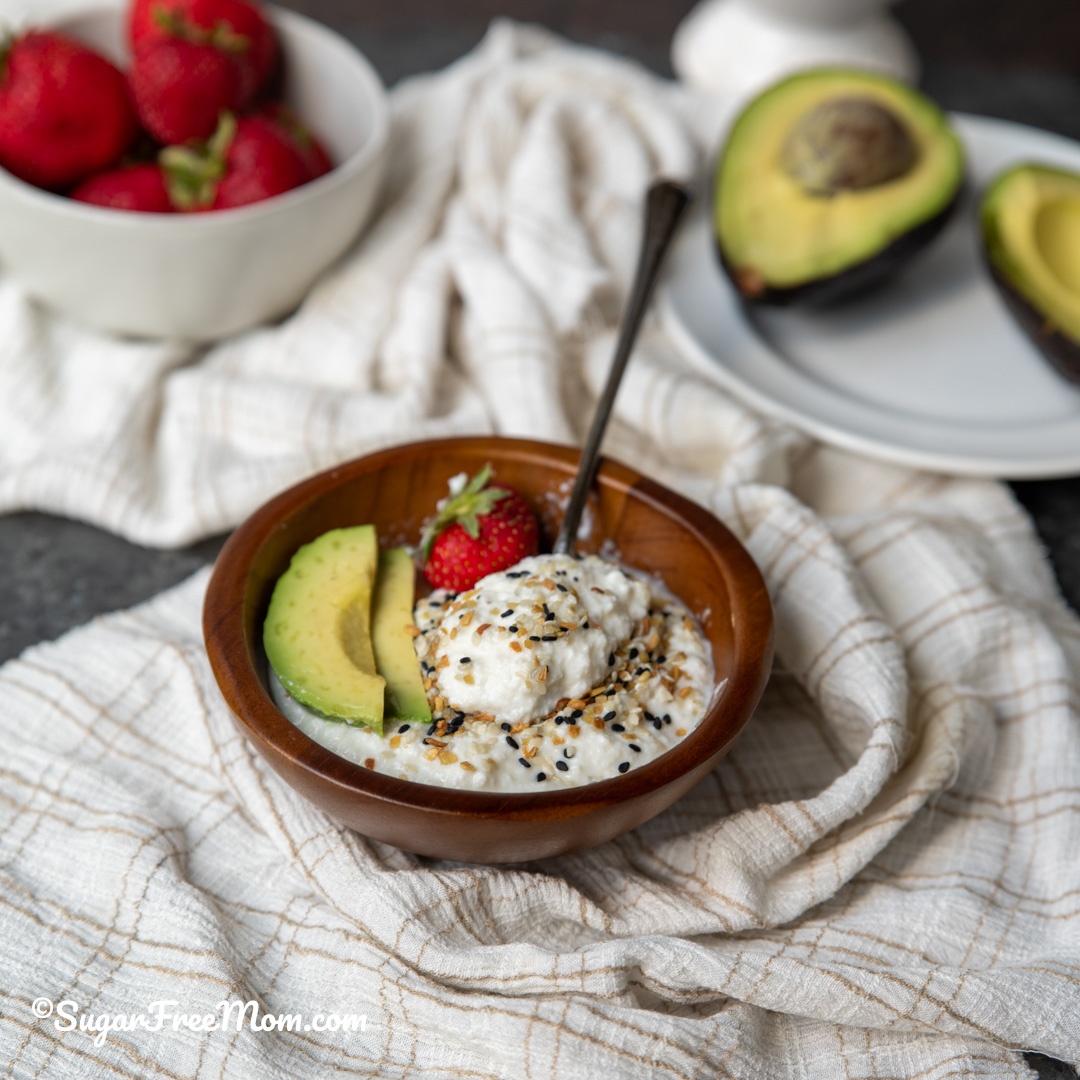
Chef Tips
#1 Use fresh lactose-free milk.
Freshness really makes a difference in cottage cheese texture and flavor, so try to get the freshest lactose-free milk you can find. Milk that’s too close to the expiration date won’t curdle as nicely.
#2 Keep an eye on the temperature.
Heating the milk slowly to just the right temperature is crucial—too hot and you risk denaturing proteins; too cool and the curds won’t form properly.
#3 Drain properly for texture.
After curds form, use a fine mesh strainer or cheesecloth to drain whey well but don’t squeeze—you want your curds to stay tender and moist. Finding that happy medium makes for perfect cottage cheese texture.
#4 Chill before eating.
Let the finished cottage cheese chill for a couple of hours in the fridge; this helps the curds firm up just right and enhances the flavor. Trust me, it’s worth the wait.
#5 Season last for flexibility.
Salt can be added at the end. You could even jazz it up with herbs or spices for variety.
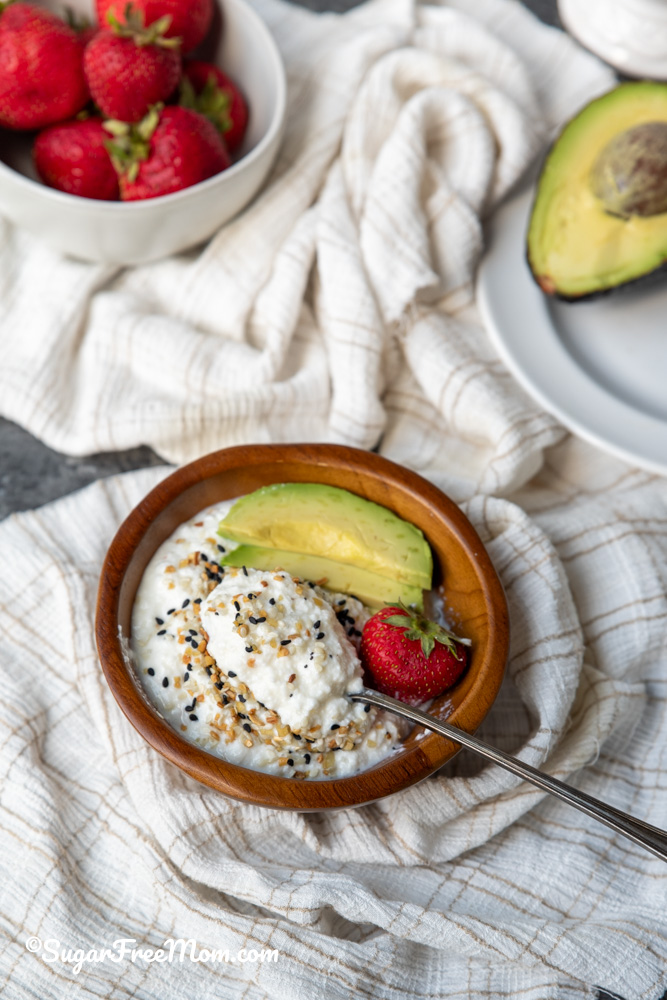
Recipe Variations
Add Fresh Herbs:
Mix in chopped chives, dill, or parsley for a fresh, herbaceous twist that complements salads and snacks.
Spicy Kick:
Add a pinch of smoked paprika or cayenne pepper into the curds for a subtle heat that livens up the flavor.
Creamier Version:
Stir in a little lactose-free sour cream or Greek yogurt to make the texture extra creamy without losing protein punch.
Sweet Cottage Cheese:
Drizzle with sugar free honey or sugar free maple syrup and add fresh berries for a simple, healthy dessert or breakfast treat.
Troubleshooting Common Problems with this Recipe
Curds Are Too Small or Watery
Make sure the milk temperature is just right—if it’s too cool, curds won’t form well. Also, try using a bit more acid to encourage firmer curd formation.
Bitter or Off Flavor
This can happen if your milk is nearing expiration or if the curds were left to sit too long before draining. Use fresh milk and drain promptly for best results.
Curds Won’t Form
Check your acid source; lemon juice varies in acidity. Also, avoid overheating the milk which can hinder curdling.
Freezing & Storing Leftovers
Freezing:
Cottage cheese isn’t the best candidate for freezing since its texture can become grainy upon thawing. If you do freeze it, store in an airtight container and use within 1 month for best texture.
Storing:
Keep your homemade lactose-free cottage cheese in the refrigerator in a sealed container. It should stay fresh for about 5 days. Give it a stir before using as whey can settle on top.
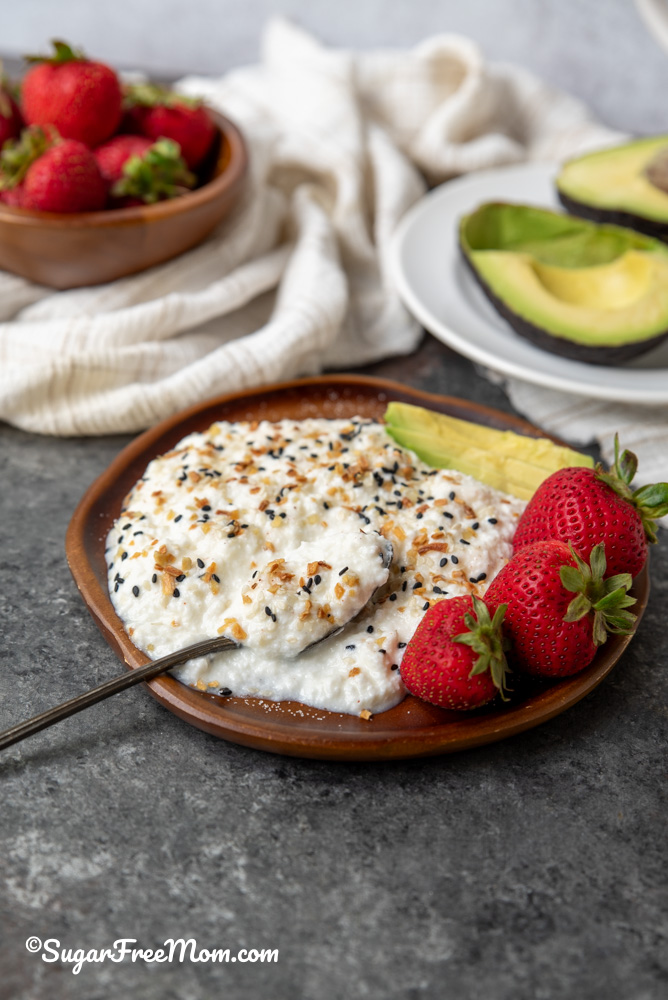
Can I use regular milk instead of lactose-free?
Yes, regular milk works perfectly if lactose isn’t a concern for you. Just expect the classic cottage cheese texture and flavor.
Can I add flavors to the cottage cheese?
Absolutely. Fresh herbs, pepper, or even fruit preserves can all be stirred in to customize the flavor.
Is this recipe suitable for vegans?
No, it requires dairy milk or lactose-free milk so this is not a dairy-free cottage cheese recipe. For a vegan alternative, look into plant-based ricotta recipes instead.
What equipment is essential for cottage cheese making?
A good thermometer and a fine mesh strainer or cheesecloth are key to ensuring proper curd formation and draining.
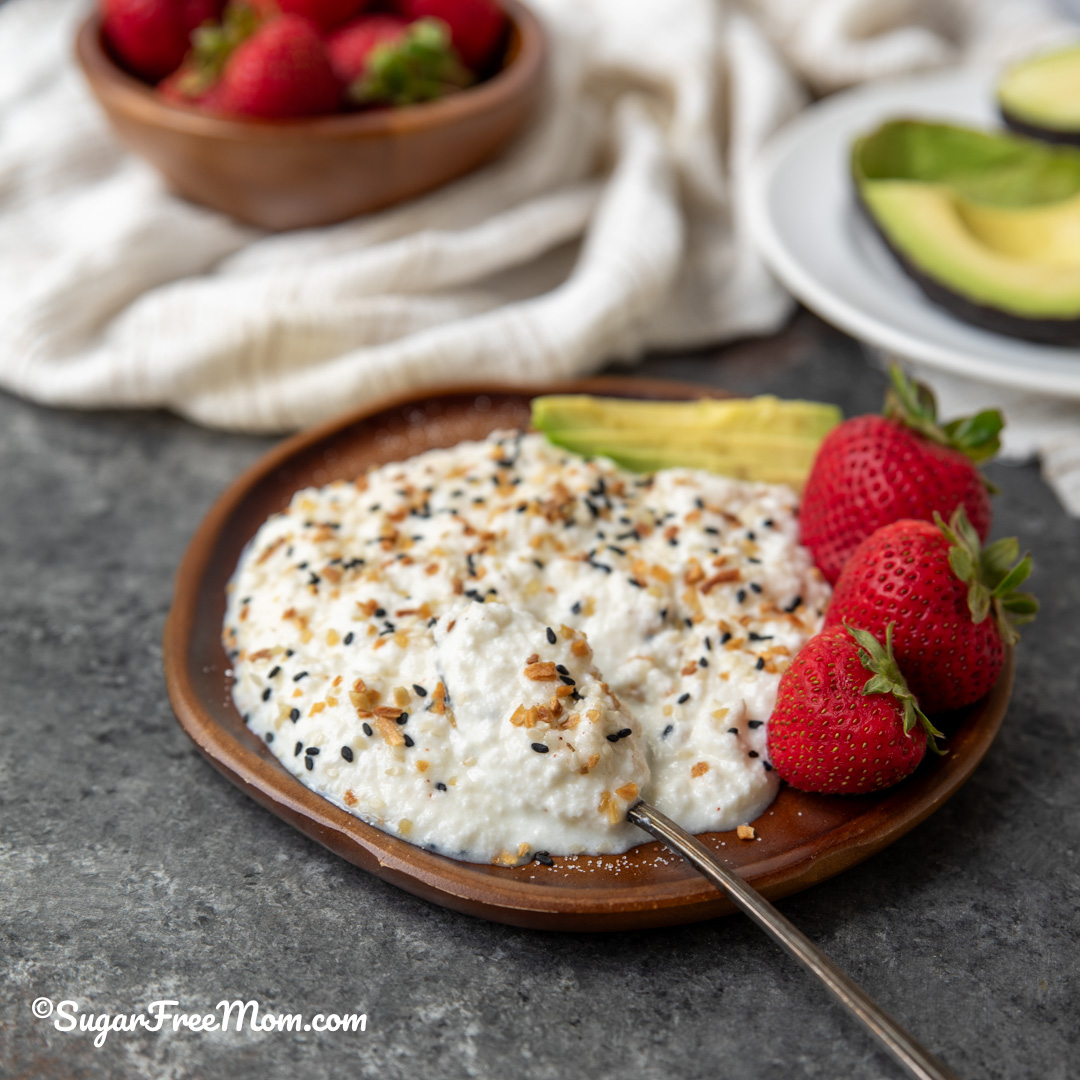
What to do with leftover Whey
Add to Smoothies or Protein Shake–
- It’s a great source of protein and adds a subtle tang.
- Adds protein and electrolytes (calcium, potassium, phosphorus).
- Gives a slight tang, like buttermilk or kefir — very subtle, but noticeable.
- Has a much thinner consistency than milk — more like water with a light creaminess.
Use in Baking- Replace water or milk in recipes like:
- Keto breads (almond flour or coconut flour-based)
- Low-carb pancakes or muffins
- Pizza dough (if you’re doing a higher-protein version)
Ferment Veggies
- Use whey as a starter for lacto-fermentation (e.g., pickled cucumbers, sauerkraut).
- Just 1-2 tbsp added to a saltwater brine will help kickstart fermentation.
How to Store Whey:
- Pour it into a clean glass jar or airtight container (a mason jar is perfect).
- Label it with the date you made it.
- Store it in the refrigerator, not the counter.
How Long It Lasts:
- Up to 2 weeks in the fridge.
- It may separate or look a little cloudy over time — that’s okay. Just give it a shake.
Freeze it:
- Ice cube trays (great for smoothies or baking).
- Zip-top freezer bags (lay flat for space-saving).
- It’ll last up to 3 months in the freezer.
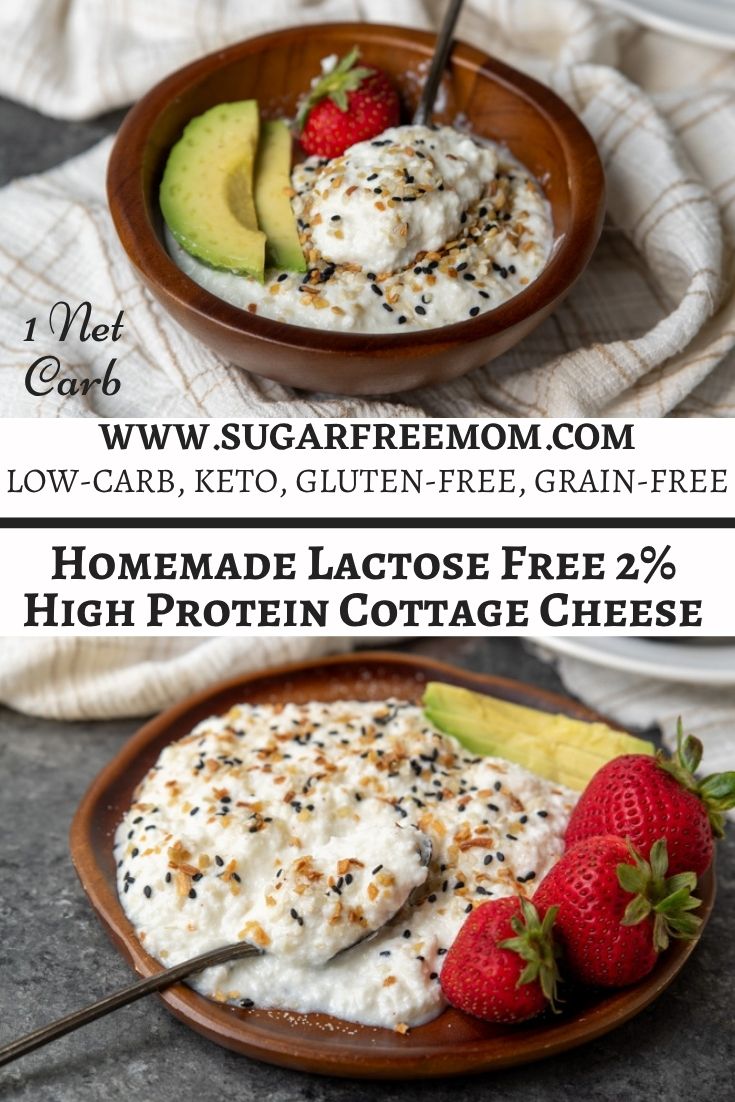
Keto Cottage Cheese Recipes
In any of my keto low carb recipes that have regular cottage cheese as an ingredient, feel free to use this homemade lactose free version in any simple recipe you like.
Keto Cottage Cheese Protein Waffles
Keto No Bake Cottage Cheese Cheesecake
Keto Cottage Cheese Chicken Crust Pizza
Homemade Lactose Free 2% Cottage Cheese
Homemade Lactose Free 2% High Protein Cottage Cheese
Ingredients
- 1/2 gallon Lactose Free 2% Milk or whole milk could be used
- 3 tablespoons white vinegar or lemon juice
- 1/4 tsp salt optional
Instructions
- Pour milk into a large saucepan. Heat milk to 185°F, stirring gently over medium heat. For best results use a cooking thermometer to check temperature. Overheating reduces curd yield.
- Remove from heat. Stir in acid slowly.
- Let sit undisturbed for 10 minutes for curds to form. Do not stir.
- Strain through fine cheese cloth, muslin cloth or nut milk bag — but don’t rinse!
- Let drain 10-15 minutes, or until mixture is 130-140 degrees F. Longer for drier curds. I let it drain 30 minutes and yielded 1.5 cups. Do not squeeze or rinse.
- Want a creamier texture? Stir in 1–2 tbsp of heavy cream after draining.
- Scoop into a bowl, add salt, if using and chill.
- See additional notes above for optional add ins.
- Store in an airtight container in the fridge for up to 5 days.
Notes
- These numbers reflect that almost all lactose is removed with the whey, making this very low in carbs and well tolerated by most with lactose sensitivity.
- Protein is highly concentrated in the curds.

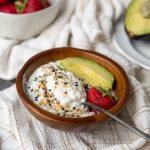

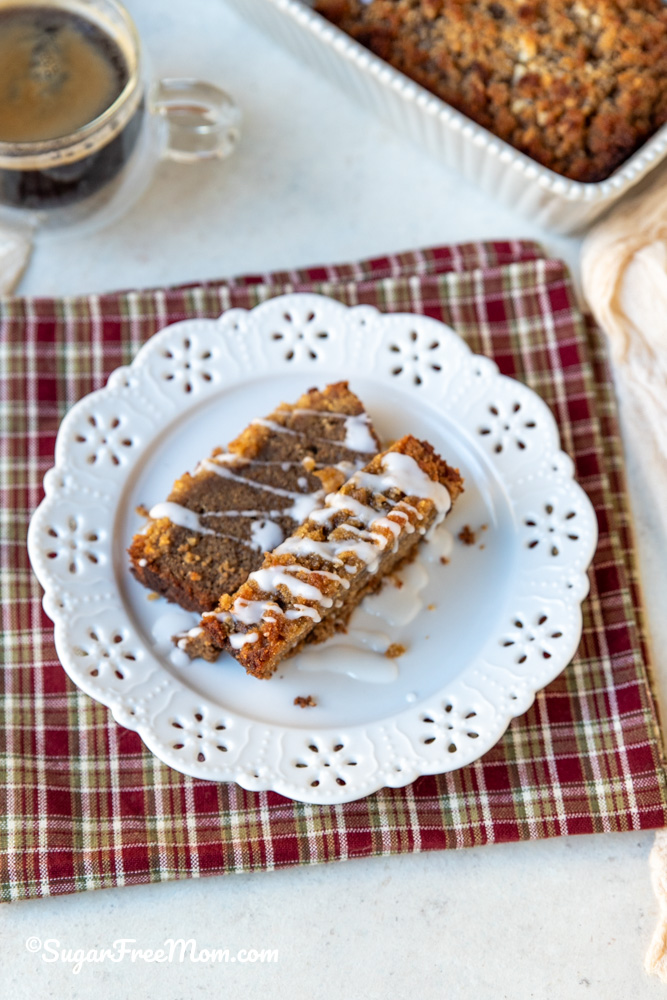
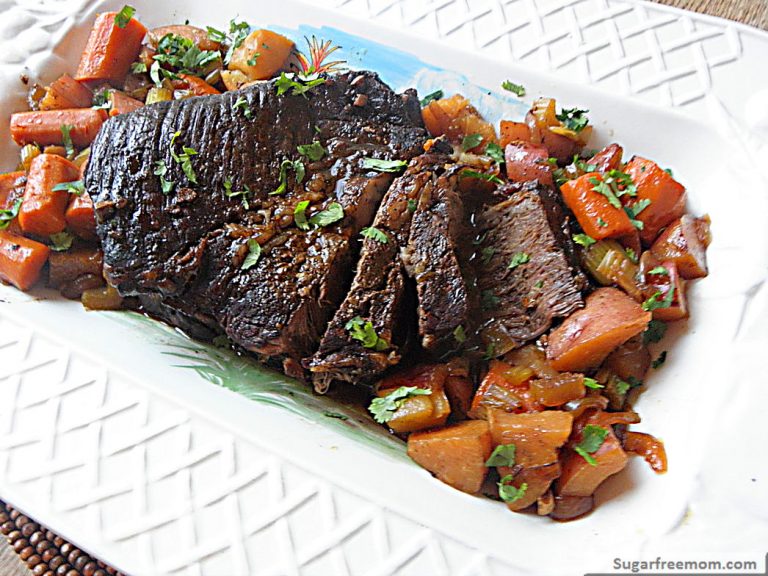
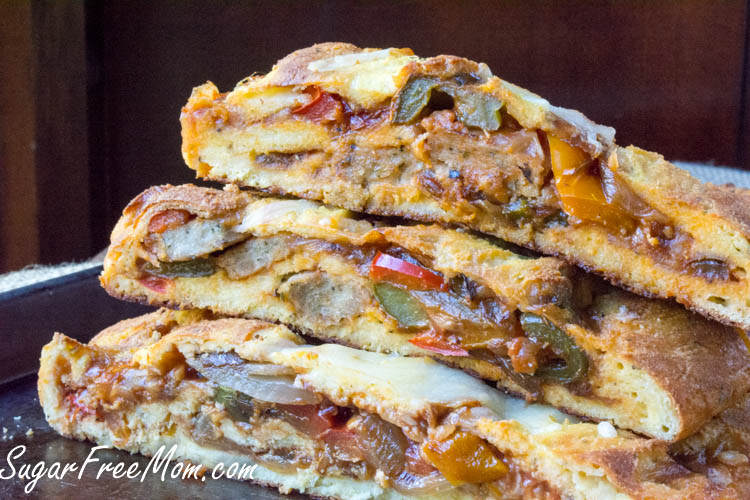
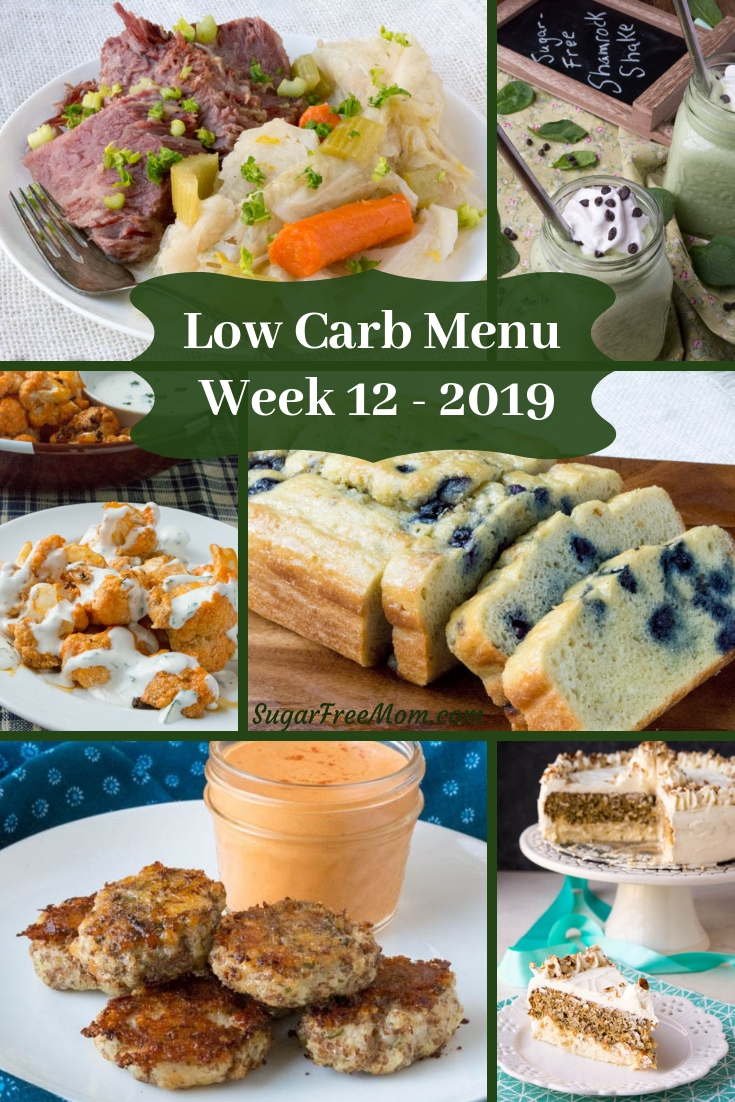
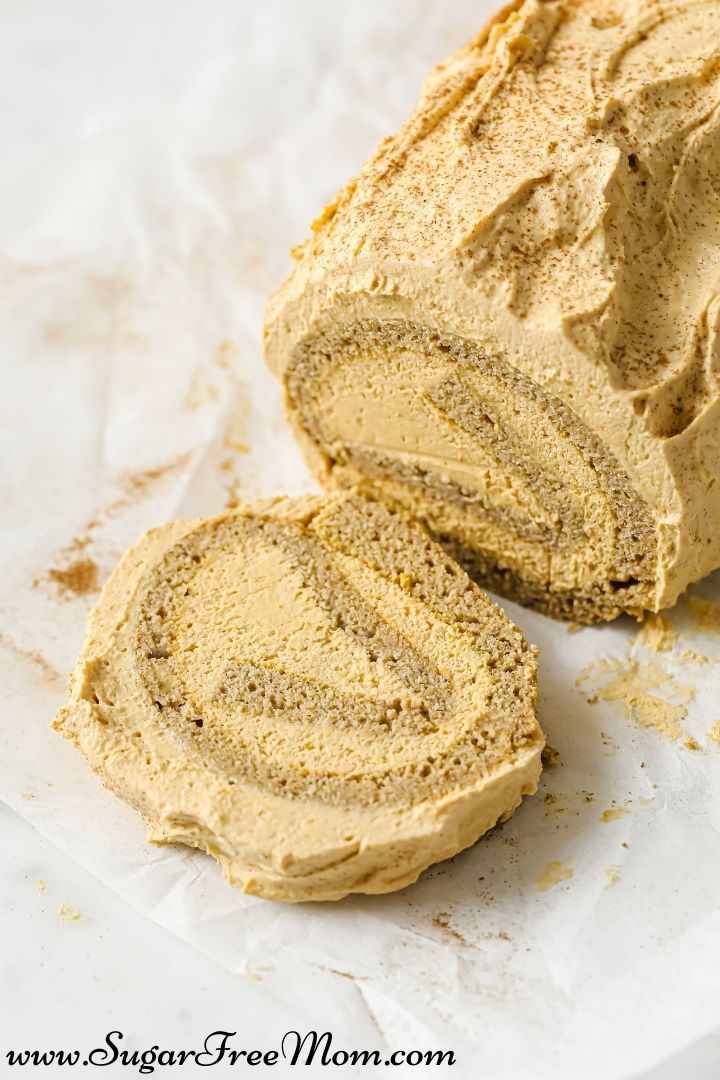
Is there a particular brand of lactose free milk that works better ? I was thinking about using Fair Life.
I’ve not tested that brand, just the Lactaid brand but I think any lactose free milk will work to make this.
how would I calculate the macros if I used almond milk to make this?
Traditional cottage cheese relies on the curdling of casein protein found in cow’s milk. Almond milk doesn’t contain this protein.The process of making cottage cheese involves separating curds (solidified milk proteins) from the whey. Almond milk, without added ingredients, doesn’t coagulate in the same way so I really can’t advise on this.
If the leftover whey has sugar in it, how can you add it to your smoothies and still be keto? Not trying to challenge but curious. I make yogurt and strain it to make it greek. I have a good deal of whey left from straining and give some of it to my dog but I’d like to use it in my smoothies if it doesn’t contain sugar. Thanks!
The leftover liquid whey contains most of the milk sugars (lactose), which is why my homemade cottage cheese curds are so low in carbs and higher in protein than store-bought. Because I used lactose-free milk, the leftover whey likely contains slightly fewer sugars than if I had used regular milk. But it’s important to remember that lactose-free milk still contains natural milk sugars — they’ve just been broken down into simpler forms (glucose + galactose). Those sugars stay in the whey, so even though it’s easier to digest, it’s not zero-carb and likely not ideal for strict keto use — but it’s great to share with your dog if they tolerate dairy well!